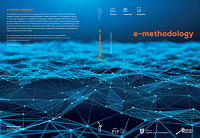Collective Behaviour of Crimes In Cyberspace
Collective Behaviour of Crimes In Cyberspace
Author(s): Andrzej BudaSubject(s): Law, Constitution, Jurisprudence, Criminal Law
Published by: Fundacja Pro Scientia Publica
Keywords: Crimes; Cyberspace
Summary/Abstract: Aim. The Convention of Cybercrimes (ETS No. 185) singned in Budapest, Hungary in 2001 created the unification of cyber-crimes and had impact on national criminal codes across the world. Therefore I started to colaborate with the National Police Headquarters from Warsaw to investigate direct and indirect connections between cyber-crimes defined by the Convention and the Criminal Code in Poland because statistical analysis of cyber-crimes were not thus far satisfactory .Methods. Statistical analysis of data collected in time series may lead to computer correlation coefficients between crimes and detect a hierarchical structure of selected cyber-crimesResults. According to correlation coefficients between crimes, the behaviour of independent cyber criminals is collective and might lead to self-organised criticality. Correlations and anticorrelations between crimes are extremely strong. Therefore crimes may exist collectively or may exclude each otherConclusion. Hierarchical structure of crimes according to the MST seems to be extremely logical and might lead to a perfect crime plans or prevention against cyber-crimes as well. Therefore the sensitive details given by graph of the MST had to be censored.
Journal: e-methodology
- Issue Year: 9/2022
- Issue No: 9
- Page Range: 79-84
- Page Count: 6
- Language: English

